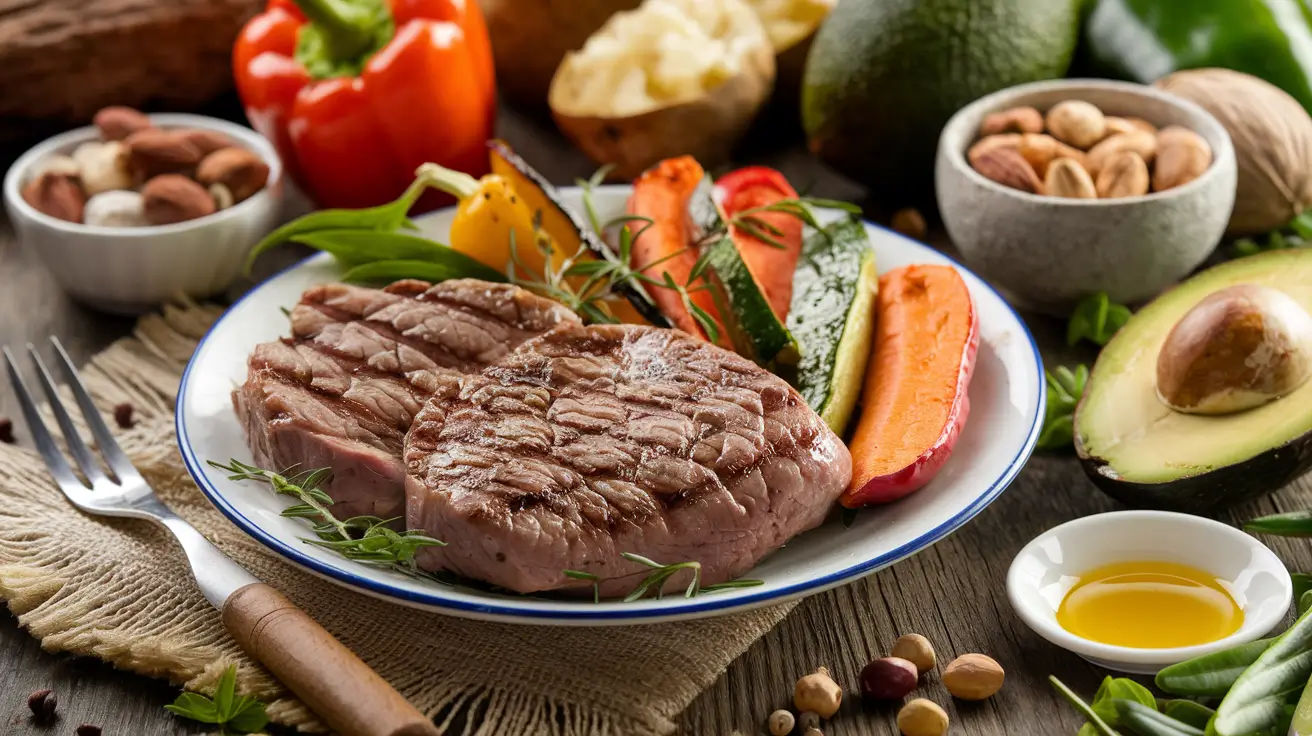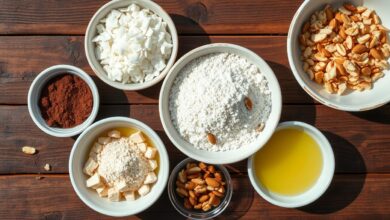The Paleo Diet: A Comprehensive Guide to Eating Like Our Ancestors

Introduction
In recent years, the Paleo diet has gained significant popularity among health enthusiasts and those looking to optimize their nutrition. Also known as the “caveman diet” or “stone-age diet,” this eating pattern is based on the types of foods our prehistoric ancestors presumably consumed. But what exactly is the Paleo diet, and why has it captured the attention of so many? In this comprehensive guide, we’ll explore the principles, benefits, potential drawbacks, and practical aspects of adopting a Paleo lifestyle.
What is the Paleo Diet?
The Paleo diet, short for Paleolithic diet, is a nutritional approach that aims to emulate the eating habits of our hunter-gatherer ancestors who lived during the Paleolithic era, roughly 2.5 million to 10,000 years ago. The fundamental premise of the diet is that our bodies are genetically adapted to thrive on the foods available to our early human ancestors, and that the modern Western diet, with its processed foods and agricultural products, is at odds with our natural nutritional needs.
Core Principles
- Whole, unprocessed foods: The Paleo diet emphasizes consuming foods in their natural state, free from artificial additives, preservatives, or extensive processing.
- Animal proteins: Lean meats, fish, and eggs are staples of the Paleo diet, providing essential proteins and fats.
- Fruits and vegetables: A wide variety of fresh produce forms the foundation of the diet, offering vital nutrients and fiber.
- Nuts and seeds: These provide healthy fats, proteins, and micronutrients.
- Healthy fats: Sources include avocados, olive oil, and coconut oil.
- Elimination of grains and legumes: The diet excludes wheat, rice, beans, and other cultivated crops.
- No dairy: Milk and dairy products are not part of the traditional Paleo diet.
- Avoidance of processed sugars and artificial sweeteners: The diet promotes natural sweeteners like honey in moderation.
The Science Behind the Paleo Diet
While the Paleo diet is often promoted based on evolutionary arguments, it’s essential to examine the scientific evidence supporting its potential health benefits.
Nutrient Density
One of the strengths of the Paleo diet is its focus on nutrient-dense foods. By emphasizing whole foods like fruits, vegetables, and lean meats, the diet naturally provides a rich array of vitamins, minerals, and antioxidants. A study published in the “Journal of Nutrition and Metabolism” found that the Paleo diet delivered higher levels of key nutrients compared to standard nutritional recommendations.
Blood Sugar Regulation
The Paleo diet’s low-carbohydrate nature and emphasis on whole foods may help regulate blood sugar levels. A 2015 study in the “European Journal of Clinical Nutrition” showed that participants following a Paleo diet experienced improved glucose tolerance and increased insulin sensitivity compared to those on a standard diet.
Weight Management
Several studies have demonstrated the potential of the Paleo diet for weight loss and maintenance. A randomized controlled trial published in the “European Journal of Clinical Nutrition” in 2014 found that participants on a Paleo diet lost more weight and reduced their waist circumference more significantly than those following a standard low-fat diet.
Inflammation Reduction
Chronic inflammation is linked to various health issues, including heart disease and autoimmune conditions. The Paleo diet’s focus on anti-inflammatory foods like fatty fish, nuts, and leafy greens may help reduce systemic inflammation. A study in the “Nutrition Journal” observed decreased levels of inflammatory markers in participants following a Paleo-style eating pattern.
Gut Health
The high fiber content from fruits and vegetables in the Paleo diet can promote a healthy gut microbiome. Additionally, the elimination of processed foods and potential gut irritants like grains and legumes may benefit individuals with digestive issues. However, more research is needed to fully understand the long-term effects of the Paleo diet on gut health.
Benefits of the Paleo Diet
Adopting a Paleo lifestyle may offer several potential health benefits:
- Weight loss: The high-protein, low-carb nature of the diet can lead to reduced calorie intake and increased satiety, promoting weight loss.
- Improved blood sugar control: By eliminating refined carbohydrates and focusing on whole foods, the Paleo diet may help stabilize blood sugar levels, potentially benefiting those with diabetes or insulin resistance.
- Better heart health: The diet’s emphasis on lean proteins, healthy fats, and vegetables may contribute to improved cardiovascular health markers.
- Reduced inflammation: The anti-inflammatory properties of many Paleo-approved foods may help alleviate symptoms of inflammatory conditions.
- Enhanced athletic performance: Some athletes report improved energy levels and recovery times when following a Paleo diet.
- Clearer skin: Eliminating processed foods and dairy may lead to improvements in skin health for some individuals.
- Better sleep: The nutrient-dense nature of the diet and potential improvements in blood sugar regulation may contribute to improved sleep quality.
Potential Drawbacks and Considerations
While the Paleo diet offers numerous potential benefits, it’s important to consider some potential drawbacks:
- Nutritional deficiencies: Eliminating entire food groups like grains and dairy may lead to deficiencies in certain nutrients, such as calcium and vitamin D.
- Cost: High-quality, organic meats and fresh produce can be more expensive than processed foods.
- Social challenges: Adhering to the diet may be difficult in social situations or when dining out.
- Sustainability concerns: A diet high in animal products may have a larger environmental impact.
- Lack of long-term studies: While short-term studies show promise, more research is needed on the long-term effects of the Paleo diet.
- Potential for excessive meat consumption: Without careful planning, the diet may lead to overconsumption of red meat, which has been linked to certain health risks.
- Elimination of beneficial foods: Some excluded foods, like whole grains and legumes, have proven health benefits and may be unnecessarily avoided.
Implementing the Paleo Diet: A Practical Guide
If you’re considering adopting a Paleo lifestyle, here are some practical tips to get started:
Foods to Eat
- Meats: Grass-fed beef, free-range poultry, lamb, game meats
- Fish and seafood: Wild-caught fish, shellfish
- Eggs: Preferably from free-range or pastured chickens
- Vegetables: All types, with an emphasis on leafy greens and cruciferous vegetables
- Fruits: All types, consumed in moderation due to sugar content
- Nuts and seeds: Almonds, walnuts, macadamia nuts, pumpkin seeds, sunflower seeds
- Healthy fats: Avocado, olive oil, coconut oil, ghee (clarified butter)
- Herbs and spices: All natural herbs and spices
Foods to Avoid
- Grains: Wheat, barley, rye, oats, corn, rice
- Legumes: Beans, lentils, peanuts, soy products
- Dairy: Milk, cheese, yogurt (some Paleo variations allow grass-fed butter and certain fermented dairy)
- Processed foods: Any packaged or convenience foods
- Refined sugars and artificial sweeteners
- Vegetable oils: Canola oil, soybean oil, corn oil
- Alcohol: Most forms of alcohol are excluded, though some allow moderate red wine consumption
Meal Planning and Preparation
- Focus on whole foods: Build your meals around a protein source, vegetables, and healthy fats.
- Prep in advance: Batch cook meats and vegetables to have ready-to-eat options throughout the week.
- Experiment with new recipes: Try Paleo-friendly versions of your favorite dishes to keep meals interesting.
- Stay hydrated: Drink plenty of water, herbal teas, and coconut water.
- Snack smartly: Keep Paleo-friendly snacks like nuts, seeds, and fresh fruits on hand for quick energy boosts.
Transitioning to Paleo
- Start gradually: Begin by replacing one meal a day with a Paleo-compliant option, then gradually increase.
- Clean out your pantry: Remove non-Paleo foods to reduce temptation.
- Focus on what you can eat: Instead of dwelling on restricted foods, explore the wide variety of Paleo-friendly options.
- Listen to your body: Pay attention to how different foods make you feel and adjust accordingly.
- Consider supplements: Consult with a healthcare provider about potential nutrient deficiencies and appropriate supplementation.
Paleo Diet Variations
As the Paleo diet has evolved, several variations have emerged to accommodate different needs and preferences:
- Primal Diet: Similar to Paleo but allows some dairy products, particularly fermented dairy and grass-fed butter.
- Autoimmune Protocol (AIP): A stricter version of Paleo designed to reduce inflammation and support those with autoimmune conditions.
- 80/20 Paleo: Follows Paleo principles 80% of the time, allowing for more flexibility and occasional non-Paleo indulgences.
- Pescatarian Paleo: Excludes land animal meat but includes fish and seafood.
- Keto Paleo: Combines Paleo principles with a high-fat, low-carb ketogenic approach.
Paleo Diet and Exercise
The Paleo lifestyle often extends beyond diet to include recommendations for physical activity. Proponents suggest engaging in a mix of activities that mimic ancestral movement patterns:
- Strength training: Lifting weights or using bodyweight exercises to build and maintain muscle mass.
- High-Intensity Interval Training (HIIT): Short bursts of intense activity followed by rest periods, simulating the intensity of hunting or fleeing predators.
- Low-intensity movement: Regular walking, hiking, or swimming for general health and stress reduction.
- Functional fitness: Exercises that mimic everyday movements and improve overall physical capability.
- Play: Engaging in enjoyable physical activities or sports for both fitness and stress relief.
Common Myths and Misconceptions
As with any popular diet, the Paleo approach has its share of myths and misconceptions:
- Myth: The Paleo diet is all about eating meat.
Reality: While meat is a component, the diet emphasizes a balance of proteins, vegetables, fruits, and healthy fats. - Myth: Paleo is a low-carb diet.
Reality: While often lower in carbs than standard diets, Paleo can include ample carbohydrates from fruits and vegetables. - Myth: The Paleo diet is historically accurate.
Reality: The diet is inspired by ancient eating patterns but doesn’t precisely replicate prehistoric diets, which varied greatly by region and availability. - Myth: Paleo is too restrictive to be sustainable.
Reality: While challenging for some, many find the diet sustainable with proper planning and creativity in meal preparation. - Myth: The Paleo diet is inherently low in calcium.
Reality: While dairy is excluded, calcium can be obtained from leafy greens, sardines, and certain nuts and seeds.
The Future of Paleo: Trends and Research
As interest in the Paleo diet continues to grow, several trends and areas of research are emerging:
- Personalization: Increasing focus on tailoring the Paleo approach to individual needs, genetics, and health goals.
- Sustainability: Efforts to make the diet more environmentally sustainable, including emphasis on local and seasonal foods.
- Gut microbiome research: Ongoing studies into how the Paleo diet affects gut health and the microbiome.
- Long-term health effects: More extensive, long-term studies to assess the diet’s impact on various health markers over time.
- Integration with other health approaches: Combining Paleo principles with other dietary strategies like intermittent fasting or plant-based eating.
Conclusion
The Paleo diet offers a unique approach to nutrition that has garnered both enthusiasm and criticism in the health and wellness community. By focusing on whole, unprocessed foods and eliminating potential inflammatory triggers, it may provide benefits for weight management, blood sugar control, and overall health. However, like any dietary approach, it’s not without its challenges and potential drawbacks.
Before embarking on any significant dietary change, it’s crucial to consult with a healthcare professional or registered dietitian. They can help you determine if the Paleo diet is appropriate for your individual health needs and goals, and guide you in implementing it in a balanced and sustainable way.
Ultimately, the most effective diet is one that you can maintain long-term and that supports your overall health and well-being. Whether you choose to fully embrace the Paleo lifestyle or simply incorporate some of its principles into your current eating habits, focusing on whole, nutrient-dense foods is a step towards better health.
Remember, our understanding of nutrition and human health is continually evolving. Stay informed about the latest research, listen to your body, and be willing to adjust your approach as needed. The journey to optimal health is a personal one, and the Paleo diet may be a valuable tool in your nutritional toolkit.




